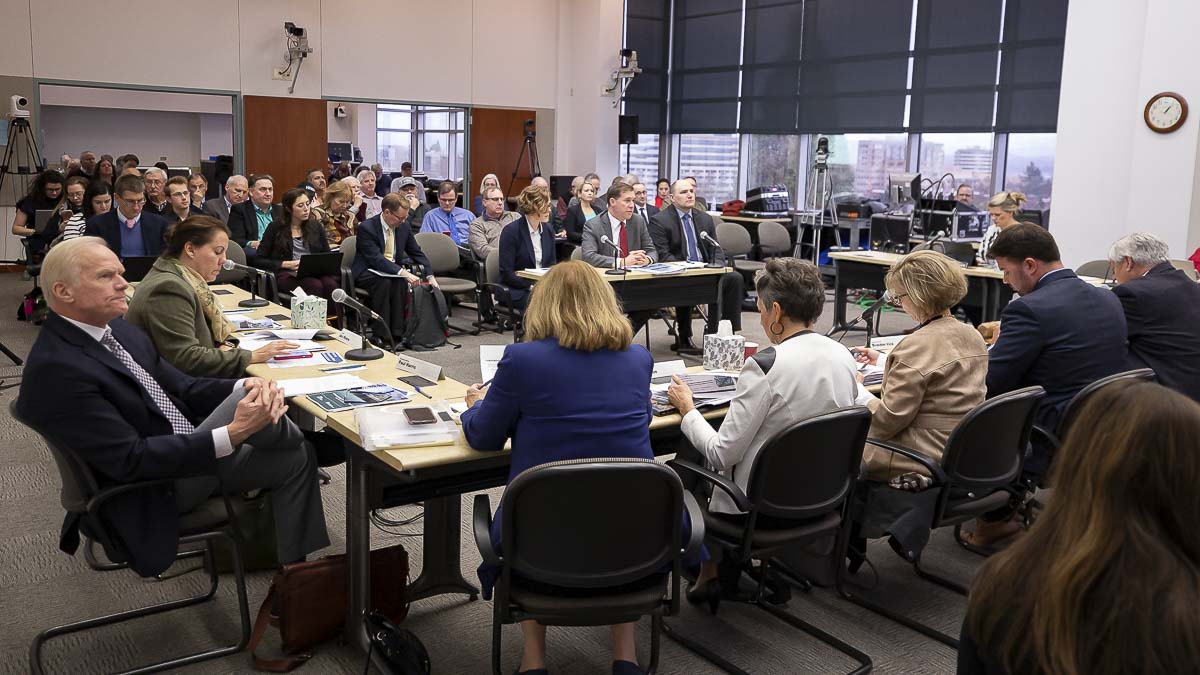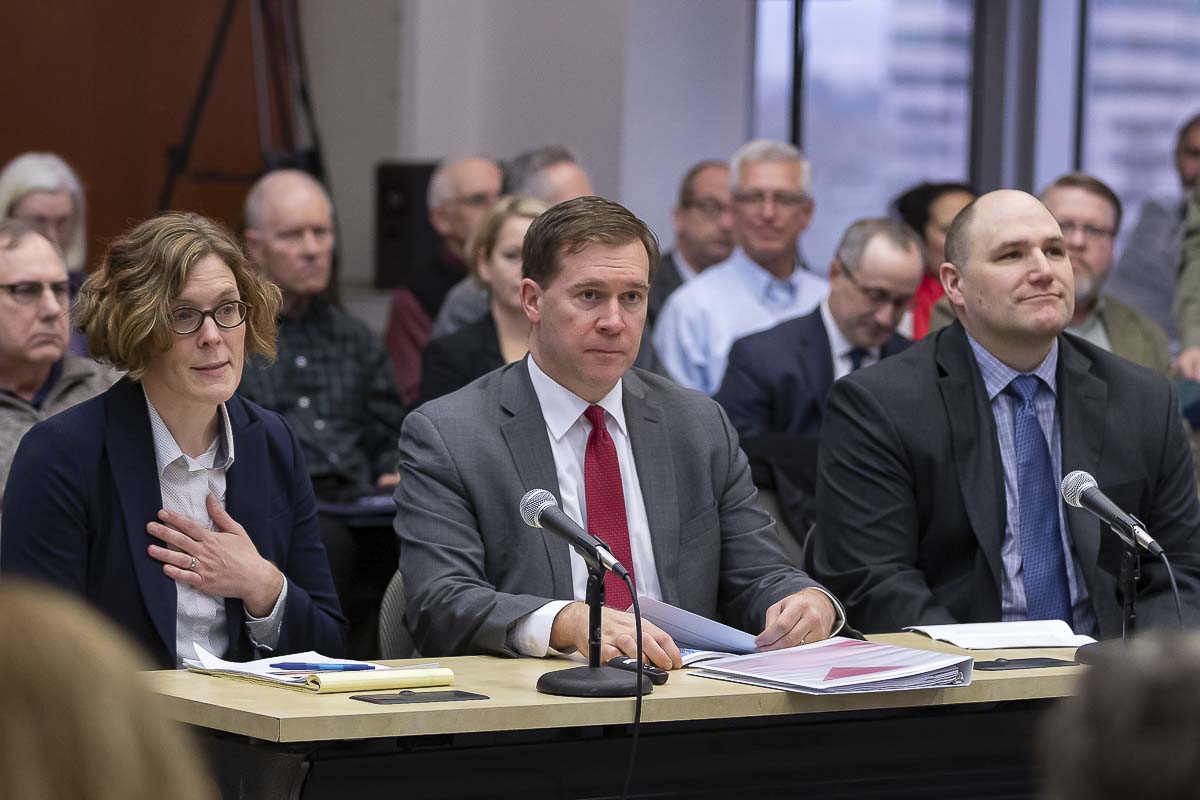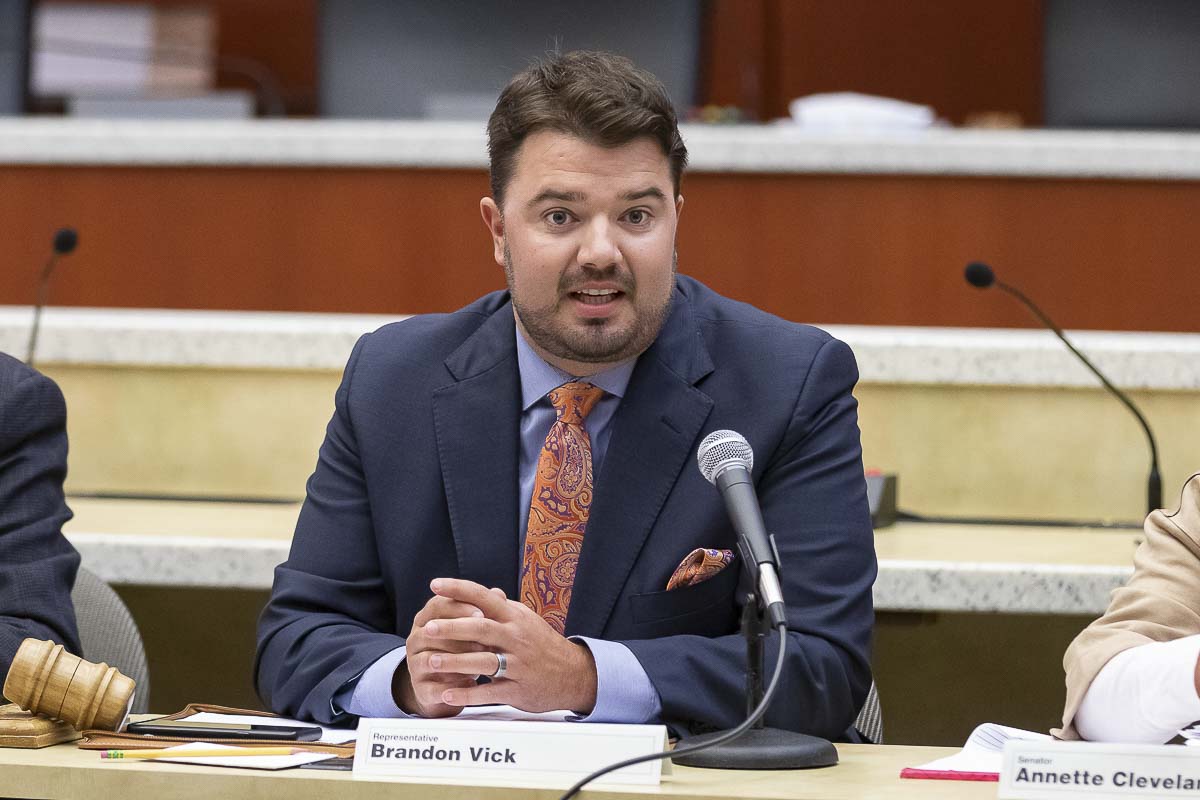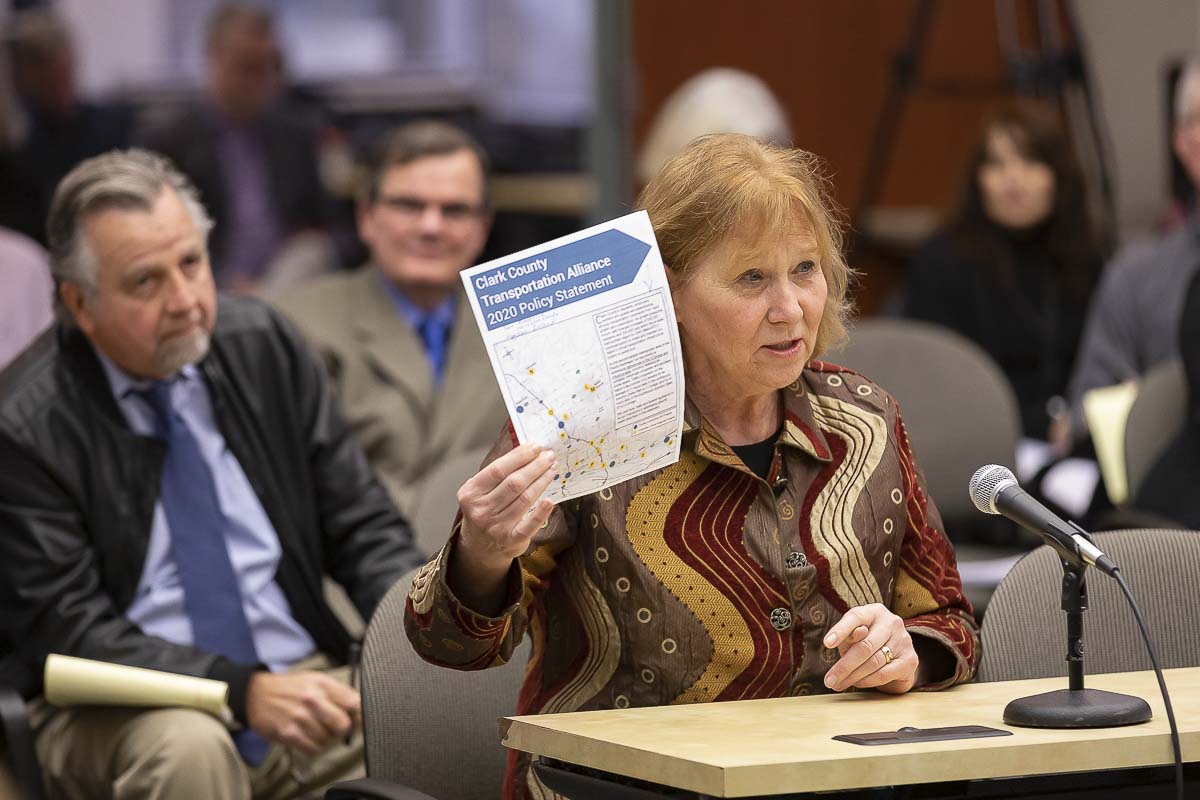The group also touched on financing and a bi-state bridge authority
VANCOUVER — The group of 16 lawmakers from Oregon and Washington relaunching plans for a new Interstate Bridge on I-5 will take a couple of months off before meeting again in April.
The Joint Interim Committee on the Interstate 5 Bridge held their December meeting at the Clark County Public Service on Dec. 20, with discussions on progress towards a project office, the hiring of outside facilitators, ranking systems for project proposals, and a conceptual timeline for when construction would begin.

That timeline is based largely on a deadline set by the Federal Highway Administration (FHWA), which granted Oregon and Washignton a five-year extension on repayment of $190 million in federal loans issued as part of the ill-fated Columbia River Crossing (CRC) project, which fell apart in 2013 after Washington lawmakers walked away from funding discussions.
Lawmakers in Oregon had set aside $450 million in transportation funding for the project, and the Federal Transit Administration would have contributed $850 million to bring light rail from Portland to Clark College.
But disagreement about that mass transit component, and worries the new bridge would only fix concerns over earthquake safety, and do little to improve transit times for daily commuters, created friction on the Washington side of the river.

Voters in Clark County twice went to the ballot box in advisory votes to voice their opposition to the inclusion of light rail as part of the CRC.
Part of the work being done as part of the new Interstate Bridge project will be to ensure that doesn’t happen again. While it remains unclear if light rail will be part of the new project, the governors of both states made it clear during the signing of a bi-state Memorandum of Intent in November that they want some form of mass transit. Doing so may be the key to unlocking at least a portion of the federal funding that was available for the CRC, but both states expect they will be left with a larger portion of the project costs.
Friday’s meeting did not touch on that mass transit component, as lawmakers continue trying to figure out what their goals specifically should be. The focus was more on outlining the steps towards opening the project office, re-engaging key stakeholders, setting up a public input process, and discovering how much of the nearly $200 million spent on studies as part of the CRC can be repurposed for this project.
The legislature in Washington State approved $35 million in their transportation budget through Enhanced Supplemental House Bill 1160, to help get a new Interstate 5 Bridge project off the ground. Half was to open a new project office for Washington State Department of Transportation (WSDOT) in Vancouver. The other half will help fund pre-planning.
Efforts to hire a project administrator are ongoing, said Travis Brouwer, assistant director for Oregon’s Department of Transportation (ODOT), with the goal of having someone in place by next Spring.

That hire will be in charge of beginning a reevaluation of the National Environmental Policy Act (NEPA) studies done as part of the CRC project, determining how much of that work can be reincorporated into the new project, and how much will need to be redone.
The office has already brought in an outside consulting firm as a facilitator to help clarify roles and responsibilities, and develop a process to “ensure informed decision making, offer policy guidance, and provide regional perspectives,” according to documents used in Friday’s presentation.
If that all goes according to plan, said Brouwer, the agencies could complete the NEPA process and begin right-of-way acquisition by Summer of 2023.
“That’s actually the trigger that FHWA needs to see, us moving to the next phase of work—beyond the environmental review or preliminary engineering—in order to ensure that we don’t have to repay those funds,” said Brouwer.
If that could be accomplished, the conceptual timeline shows construction beginning in Summer of 2025. But several lawmakers wanted to know how likely it was that the feds would be lenient if things fell behind.
“They, I think, will be continuing to push us to meet these timelines that we have laid out,” said Brouwer, “but I do believe that if we are all operating in good faith, if we are making those honest efforts to move forward with the project, if we are not able to meet some of those time frames exactly, that we will be able to have a good conversation with them.”
“There is a little bit of space there,” added WSDOT Regional Administrator Carly Francis, “but there is a whole host of questions as we get restarted about how exactly things unfold.”
Bi-state bridge authority to be examined
One of the things the group hopes to look at more closely when they return in April, after each respective legislature concludes their 2020 sessions, is a study of how other states divide responsibility for interstate crossings.
“We are in a different era than the era of past mega projects, and there are bi-state organizations in other parts of the country,” said 49th District Rep. Sharon Wylie (D-Vancouver). “So I wanted to at least be conscious of what we could learn from what we’re doing and what we have done in the past.”

Sen. Ann Rivers (R-La Center) added her support for the idea of a bi-state bridge authority, adding that it could open the discussion of future added crossings over the Columbia River, something many lawmakers on both sides have advocated for as part of a larger regional transportation plan.
“If we had done this 50 years ago, then we might have several more crossings between our fair states than we currently have,” said Rivers, “and we might not be feeling the crush of all the congestion that we are currently experiencing.”
Francis said one of the key goals of the process will be to engage a long list of stakeholders, as well as the public, to make sure their concerns are being heard.
“I would say gone are the days of an open house answering the question for public involvement, and we know that,” said Francis. “That doesn’t mean we can do something about everybody’s comment, because we can’t, and there’s no way to make everybody happy. But certainly the key here is having that opportunity for people to be able to influence what’s happening with program development, and with the outcomes of the program.”
Multiple projects and tolling
Another question from the legislators centered on tolling, as well as how ODOT and WSDOT plan to handle a slate of projects set to all be underway within a small window of time.
“We have essentially three mega projects potentially moving forward in a window of time in the 2020 decade that will need to be well coordinated,” said Brouwer, “both in terms of the tolling elements, the construction elements, the mobility elements, the availability of contractors within the community, in order to deliver these projects effectively while ensuring that we’re not causing inordinate impacts on the traveling public.”
Francis noted that both plans to toll a new Interstate 5 Bridge as a funding option, and Oregon’s plan to toll parts of I-205 and I-5 in Portland, would come under scrutiny from the federal agencies involved, and likely include some amendments to make the cost less impactful on the general community.
In addition to potential tolling, the Interstate 5 Bridge project, and the proposed cap over I-5 at the Rose Quarter, ODOT is also planning to expand the Abernathy Bridge on I-205 near Oregon City. All of those projects are currently slated to get underway sometime in the mid-to-late 2020s.




